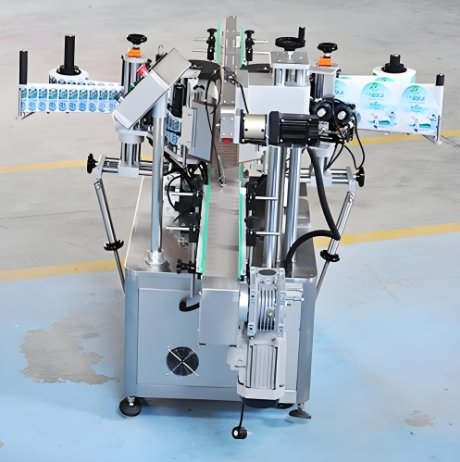
In modern packaging lines, automation is the key to speed, consistency, and cost-effectiveness. Choosing the right orientation of your Labeling Machine—either vertical or horizontal—is essential for achieving optimal performance. Whether you’re labeling round bottles, flat containers, or unique product shapes, understanding how orientation affects your process will help you select the best solution.
When your Labeling Machine is part of a complete packaging system alongside an Automatic Filling Machine, synchronization and compatibility become even more critical. In this article, we’ll examine the differences between vertical and horizontal Labeling Machine types, their best-fit applications, and how they integrate seamlessly with Automatic Filling Machine systems.
What Is a Vertical Labeling Machine?
A vertical Labeling Machine positions products upright as they move along a conveyor. Labels are applied from the side, wrapping around bottles or flat surfaces vertically.
Advantages:
- Ideal for cylindrical containers like water bottles, juice bottles, or shampoo containers.
- Requires less floor space.
- Easier integration with upright Automatic Filling Machine lines.
- High-speed operation for high-volume production.
This type of Labeling Machine is the most common in industries such as beverages, cosmetics, and household chemicals. When paired with a vertical Automatic Filling Machine, the product flows seamlessly from fill to label without changing orientation.
What Is a Horizontal Labeling Machine?
A horizontal Labeling Machine is designed to label products lying on their sides. It is commonly used for unstable or small-diameter containers that cannot stand upright on a conveyor.
Advantages:
- Perfect for small vials, ampoules, tubes, or pens.
- Prevents tipping over during label application.
- Offers greater accuracy for small items.
- Often used in pharmaceutical and cosmetic sectors.
In a packaging line with an Automatic Filling Machine, the product may need to be rotated or aligned horizontally after filling. This ensures smooth transition to the horizontal Labeling Machine station for label application.
Comparing Vertical vs. Horizontal Labeling Machine Setups
| Feature | Vertical Labeling Machine | Horizontal Labeling Machine |
|---|---|---|
| Product Orientation | Upright | Laid flat |
| Ideal Product Type | Bottles, jars, containers | Tubes, vials, small bottles |
| Speed | Very high | Medium to high |
| Integration with Automatic Filling Machine | Direct conveyor feed | Requires rotation or transfer arm |
| Floor Space | Compact | Requires slightly more space |
| Label Positioning | Side or wraparound | Full wrap or center |
Understanding these differences is key to choosing the right Labeling Machine based on your product shape, production volume, and existing Automatic Filling Machine setup.
Seamless Integration with an Automatic Filling Machine
Regardless of orientation, your Labeling Machine must work in harmony with your Automatic Filling Machine. Here’s how integration adds value:
- Synchronization: Product spacing and timing are matched perfectly between machines.
- Increased Output: A properly integrated line reduces bottlenecks and idle time.
- Reduced Labor Costs: Automation handles filling, labeling, and sometimes even capping.
- Quality Control: Consistent product alignment ensures correct label placement.
For example, a cosmetic company using a horizontal Labeling Machine for small tubes would install an Automatic Filling Machine that dispenses creams into tubes in a horizontal tray, feeding them directly into the labeler.
When to Choose Vertical Orientation
Opt for a vertical Labeling Machine when:
- Your containers are stable in an upright position.
- You need high-speed labeling.
- You’re working with standard bottle sizes (250ml, 500ml, 1L).
- Your Automatic Filling Machine is designed for vertical fill.
Common industries include:
- Beverages – Water, juice, energy drinks.
- Household goods – Detergents, cleaners.
- Personal care – Shampoo, lotions, body wash.
When to Choose Horizontal Orientation
Choose a horizontal Labeling Machine if:
- Your products are unstable when standing.
- You label items like ampoules, tubes, or syringes.
- You need highly accurate placement for small labels.
- Your Automatic Filling Machine is custom-built for tube or vial filling.
Typical applications include:
- Pharmaceuticals – Glass vials, oral syringes.
- Cosmetics – Lip balm tubes, mascara.
- Food products – Sauce tubes, single-dose packets.
Enhancing Labeling Precision with Sensors
Many vertical and horizontal Labeling Machine systems come equipped with sensors to detect product presence, orientation, and alignment. These can be photo-eye sensors, encoders, or optical scanners. This ensures the label is applied only when the product is in the correct position, especially in high-speed operations alongside an Automatic Filling Machine.
Modular Design for Future Expansion
Today’s top Labeling Machine manufacturers offer modular systems. These allow for:
- Easy changeovers between vertical and horizontal orientation.
- Quick adaptation to new container sizes.
- Integration with advanced Automatic Filling Machine lines.
Such flexibility is critical for businesses scaling production or introducing new product lines.
Maintenance and Support
Both vertical and horizontal Labeling Machine types are designed for low-maintenance operation. Routine upkeep involves:
- Cleaning rollers and belts.
- Sensor calibration.
- Occasional software updates.
Machines integrated with Automatic Filling Machine lines should undergo joint calibration to ensure smooth handoffs between stages.
Final Thoughts
Choosing the right orientation—vertical or horizontal—for your Labeling Machine is a vital decision. It influences speed, accuracy, space requirements, and compatibility with your Automatic Filling Machine.
A vertical Labeling Machine is ideal for standard upright bottles and high-speed lines. In contrast, a horizontal Labeling Machine suits smaller, less stable products that require precise labeling while lying flat. In both cases, proper integration with your Automatic Filling Machine will lead to a more efficient, reliable, and scalable packaging process.

